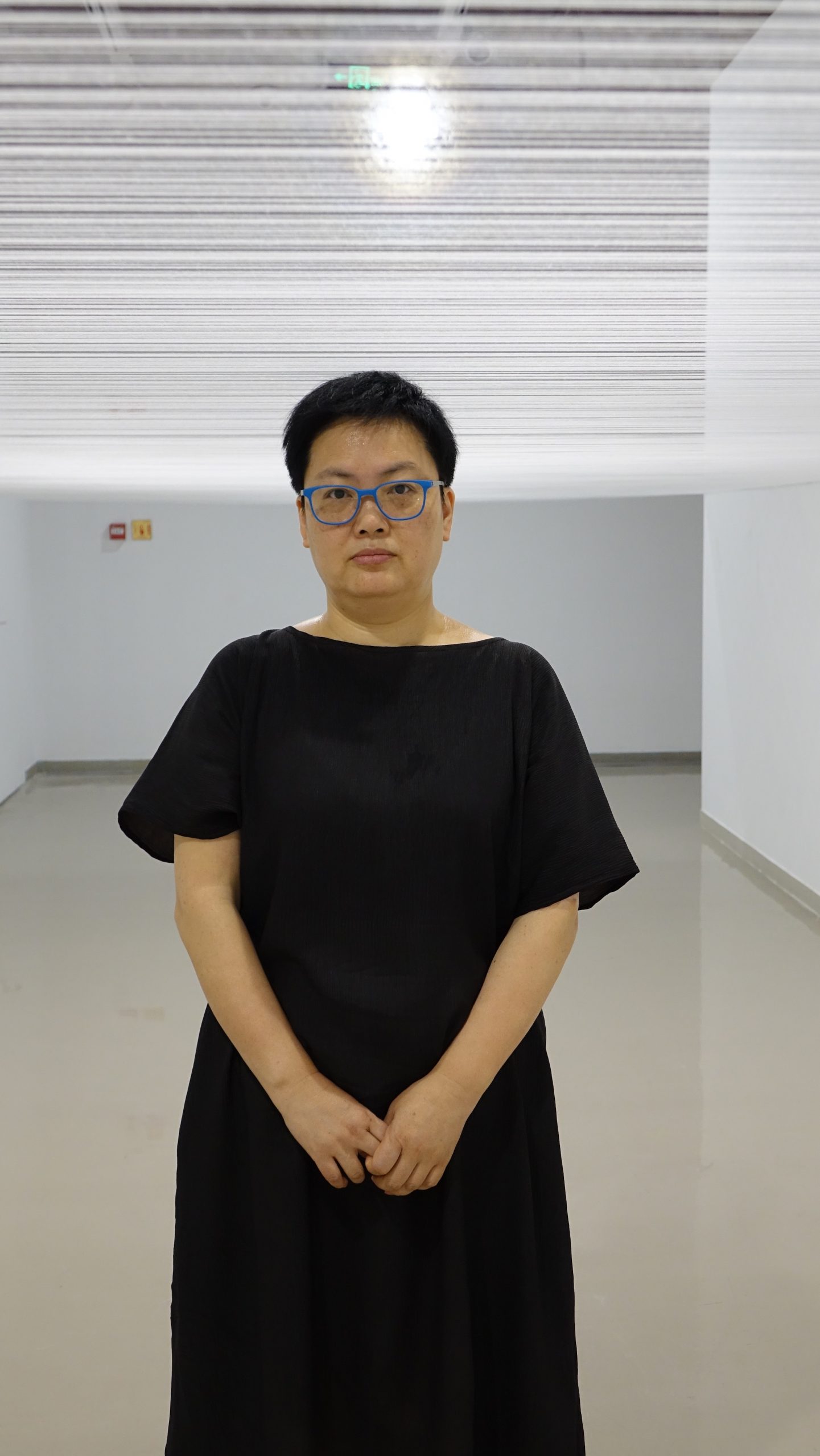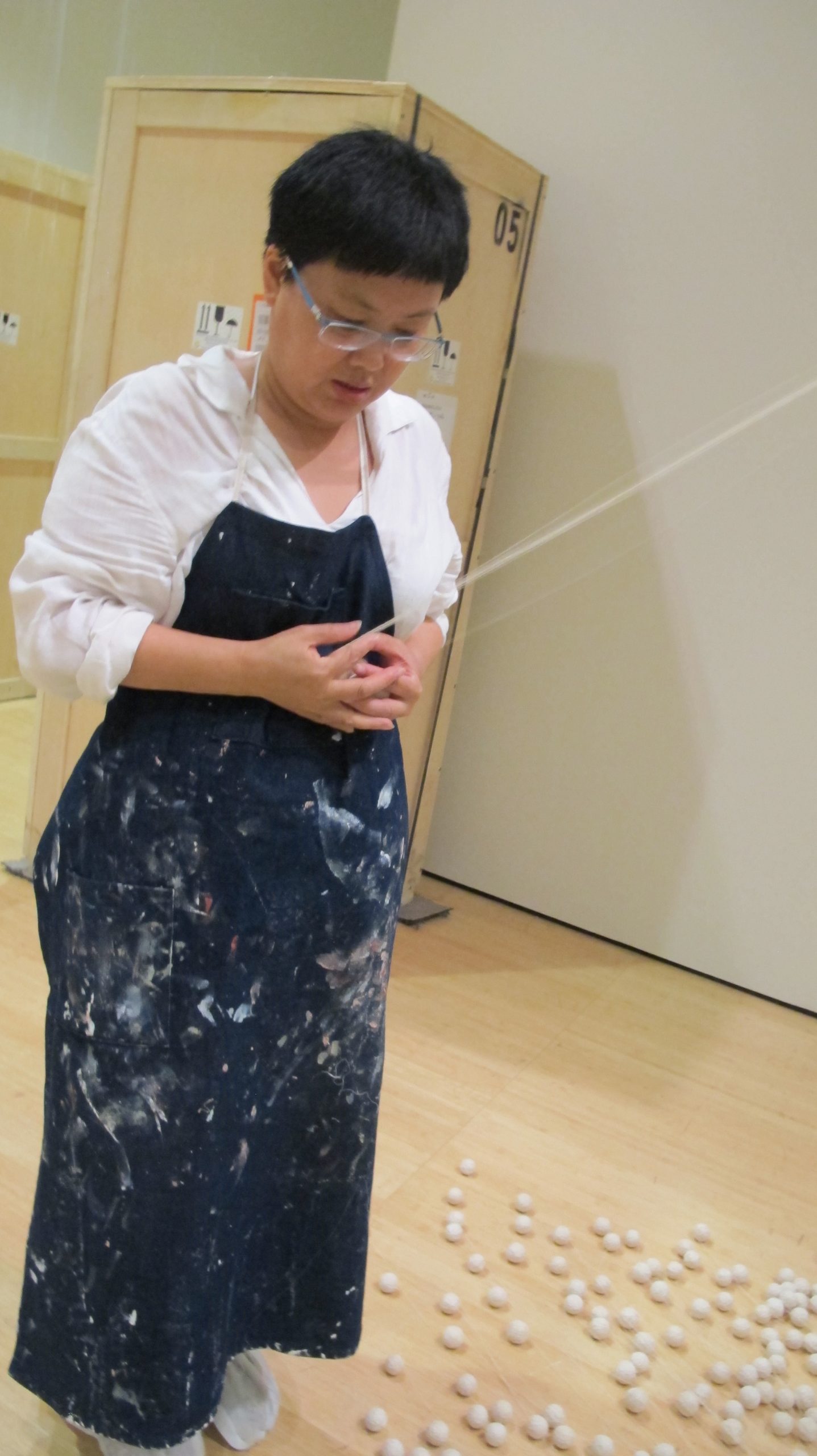At first I was just curious but also familiar [with thread], then slowly I began to think the concept was more important than this. In the beginning it was maybe more according to my own personal life, as in the habits that comprise my identity, and gradually that disappeared. It slowly changed and developed into something new, and continued to develop, and I found it carried a new potential. I think materials are really not too restrictive; you can use any material, and then you can expand the material to infinity, or you can shrink it to invisibility.
I used this thread, which has not been dyed, a lot because when I was very young, my mother used it very often, and then she asked me to help her sew clothes, knit sweaters, and so on, all with this thread. So I have quite an emotional attachment to this thread. But I think this material is—what’s interesting about it is that it has a lot of possibilities; it can just look very soft, very gentle, and then eventually it becomes very sensitive, and then very sharp. Then it is up to the artist to see how to use it, what kind of idea to give it, what kind of a meaning to give it. Then the material can continuously change.
When I use a material, I would change its properties, change its familiarity. I believe materials have properties, have genders; they can be distinguished between female and male, and often we can, through art, entirely change the identity of the material itself or change what the user adds to this material.
So actually when I’m making [works like Day-Dreamer (2000)], I like to flip everything around, upside down, and then when you see the work you feel like there’s a person hiding inside the mattress on the ground. You really feel it. You may feel it or maybe visually you think it’s there, but it is the opposite of what we’re used to. It’s actually on top. Its real form is on top. What’s more, we never keep our eyes open when we are sleeping, but here I’ve kept [the figure’s] eyes open. So all these elements tell me that it’s real, but just upside down, just daydreams; it’s just the complete opposite of reality.
I have also de-gendered my self-image. It is bald, and you can’t tell its gender. It is a completely natural person, completely natural, without any gender. You also can’t see this person’s social class. You can’t see its historical or cultural background. What you see is just a person. So basically I have taken out all of the elements that affect this person, taken out all of the social elements and identity elements, so that it’s something that’s closest to us, without any exaggerations, without anything added. This lets the audience or lets myself more purely embody this idea.
In Chinese and English, this term “daydream” carries subtle differences. I think the English is basically negative. Just like, you’re a daydreamer, every day with your head in the clouds. But in Chinese the word “daydream” . . . It also has this negative connotation. You are a daydreamer; you’re not realistic. But another aspect is that this person has more fantasy. They are different from others. They may have a variety of ideas, or their unrealistic ideas may help us to reflect more.
NOTE: Underlined text indicates when English-language words are used.






